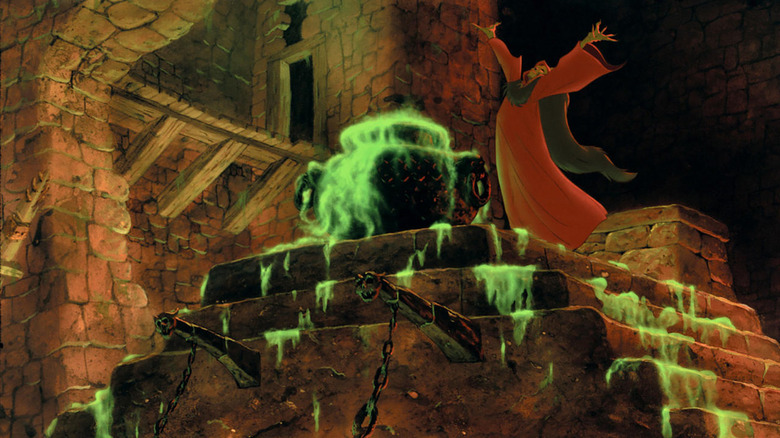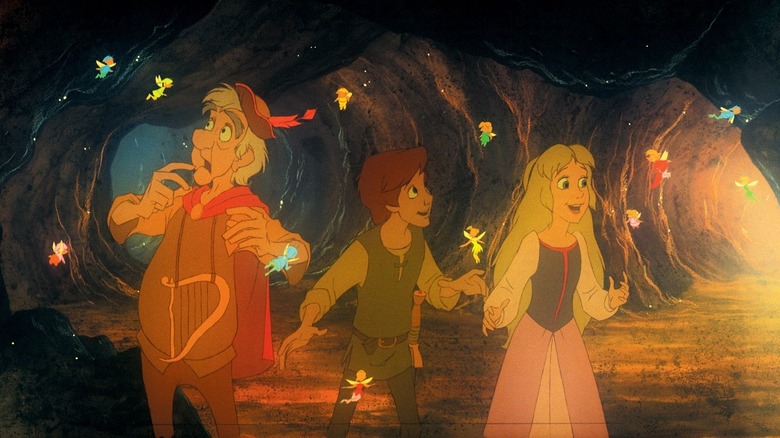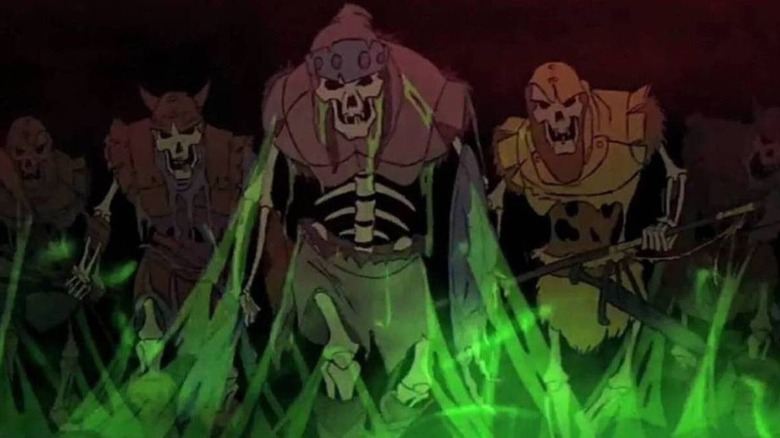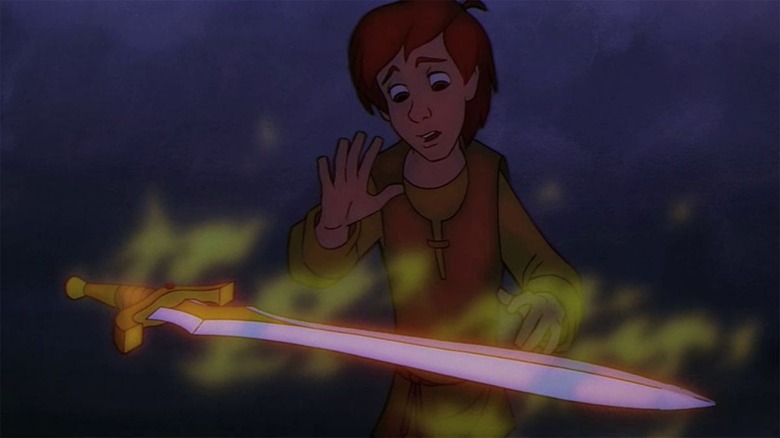How The Black Cauldron Nearly Ruined Disney Animation
Considering Disney is the most powerful name in the entertainment industry, it's hard to imagine there was ever a time when the House of Mouse wasn't a dynamic force to be reckoned with. From 1989 to 1999, Walt Disney Feature Animation experienced what is known as "The Disney Renaissance," where they were producing box office smashing animated features, bringing the company out of the ashes, and turning into a financial powerhouse in the process. Disney was now untouchable, but a renaissance can only exist if there is a need for revival, and after the company's struggles through the 1970s and 1980s, the Disney Renaissance saved a company that looked like it was heading toward closing its doors forever.
In 1985, Disney set out to make an animated adaptation of Lloyd Alexander's fantasy series "The Chronicles of Prydain," in what would become "The Black Cauldron." At the time of its creation, the film was the most expensive animated movie ever made, the first Disney film to feature computer-generated imagery, and thanks to its terrifying villain, the film earned Disney animation's first-ever PG rating. With a colossal budget of around $44 million, "The Black Cauldron" needed to be a smash-hit. Unfortunately, it debuted against a re-release of "E.T. The Extra-Terrestrial," the month-old "Back to the Future," and the premiere of "National Lampoon's European Vacation." The film made only $21 million, delayed the home-video release of the film for over a decade, and almost single-handedly destroyed Disney animation for good.
Why did Disney want to make The Black Cauldron?
For those who've not had the chance to see it, "The Black Cauldron" is a far leap from something like "The Little Mermaid" or "Cinderella." The goal was to capitalize on the growing popularity of dark fantasy films during the early 1980s, like "Conan the Barbarian," "The Dark Crystal," and "Time Bandits." Disney was looking to release the film in 1984, but the project was delayed until the following year after the newly appointed Walt Disney Studios chairman Jeffrey Katzenberg ordered the film's horrifying climax to be edited after children ran out of the test screening in terror.
The story follows a young assistant pig keeper who discovers his pig can see into the future, while the dastardly Horned King is on the search for the titular Black Cauldron to gain the ability to raise an army of undead warriors to take over the world. Now, with help from his furry sidekick Gurgi and Princess Eilonwy, it's up to the pig keeper to track down the Black Cauldron, keep it away from the Horned King, and save the world. Did I mention that the Black Cauldron got its power after an evil king was MELTED ALIVE inside of it, turning it into a prison for his demonic spirit? Yeah, this is how Disney decided to open a kid's movie!
How did The Black Cauldron fail so hard?
It's important to understand where the state of Disney was at this time, because the behind-the-scenes turmoil started the domino effect of the film's failure. In 1979, just a year before "The Black Cauldron" was heading into production, legendary animator Don Bluth left the company and took 13 people with him. Bluth would later create the non-Disney animated hits "An American Tail," "The Land Before Time," All Dogs Go to Heaven," and "Anastasia." This meant that Disney's animation team would be composed of recent CalArts graduates who were all still a bit green at the time. As legend has it, Disney pushed forward with "The Black Cauldron" not only to catch the fantasy wave of the 1980s but also out of bitterness toward Bluth's first non-Disney venture, "The Secret of NIMH."
The film was supposed to be a huge epic, but the scale of "The Black Cauldron" decimated the already depleted animation department, there was a 10-week animators' strike in 1982, and it's been reported that the rush to get things done was so grim, that "anyone who could hold a brush" was given a crash course in cel painting and put to work. It's been stated that at the start of Jeffrey Katzenberg's tenure at Disney, he didn't really care about animation at all — ironic, considering he is the co-founder of DreamWorks Animation
A whole new world of animation
While originally thinking about the possibility of just scrapping the animation division altogether, Katzenberg and Disney CEO Michael Eisner had a change of heart and realized that animation could be the key to Disney's success — but only if they changed their current methods and pivot toward cheap and fast production. The massive failure of "The Black Cauldron" proved that something needed to change.
Katzenberg helped Disney thrive with live-action films throughout the '80s, but his decision to pivot to a new practice in animation led to some of Disney's best-performing features, like "The Great Mouse Detective" and "Who Framed Roger Rabbit," and later exploding with "The Little Mermaid," "Beauty and the Beast," "Aladdin," "The Lion King," and "Pocahontas."
There may not be a lot of people out there who consider "The Black Cauldron" to be one of the best Disney films ever made, but it certainly is one of the most impactful, if only for the way its failure was able to usher in the Disney Renaissance. Without this whopping defeat, we wouldn't have the Disney we do today, and it's impossible to imagine how different the world of entertainment would look had it not been for the butterfly effect of "The Black Cauldron."



